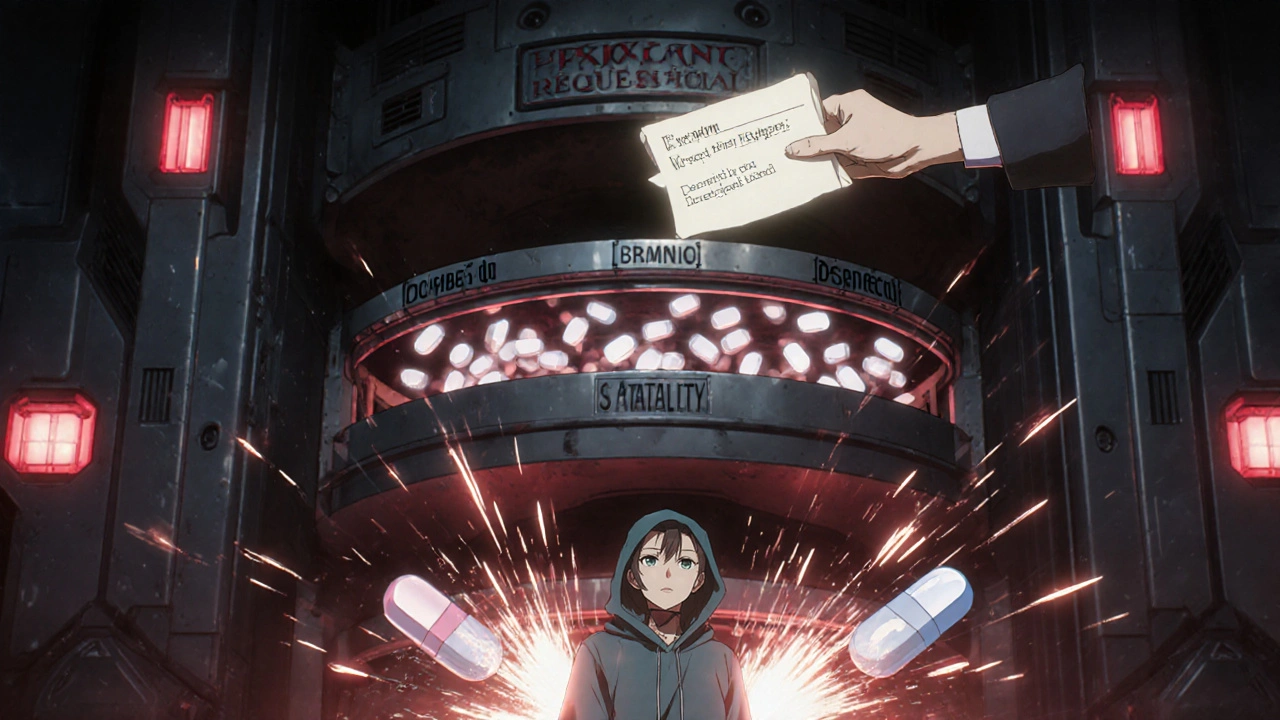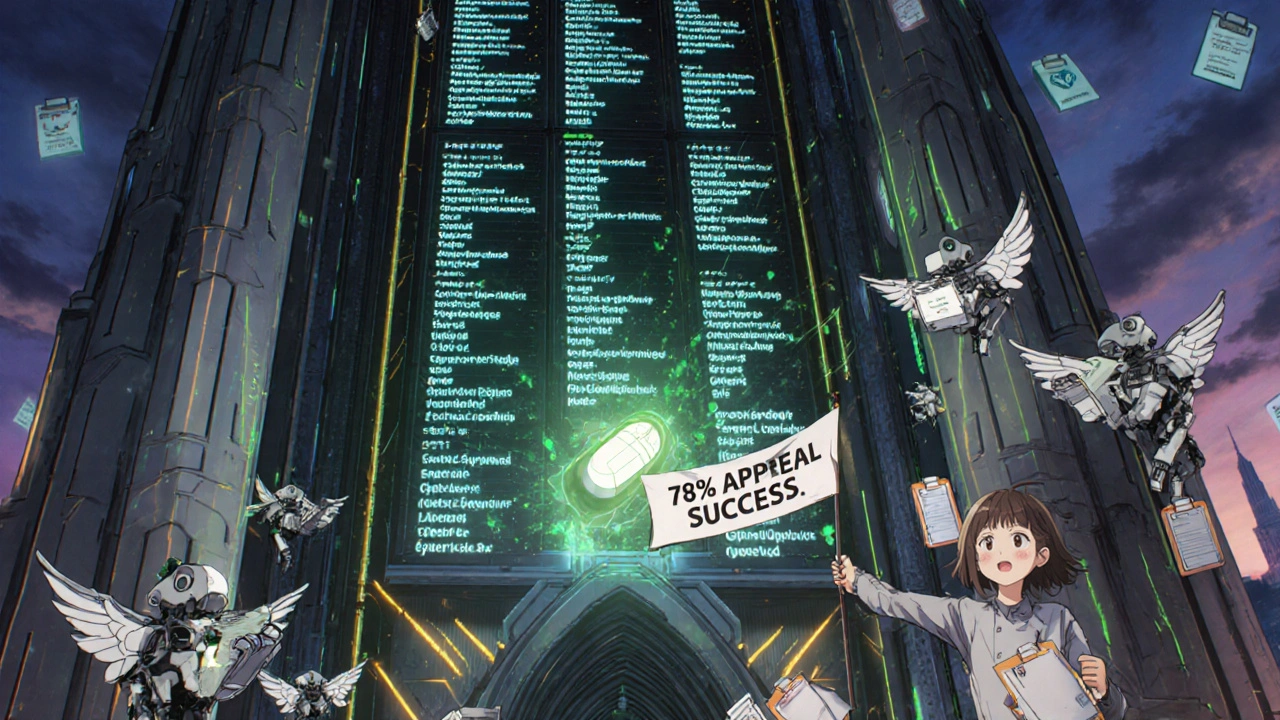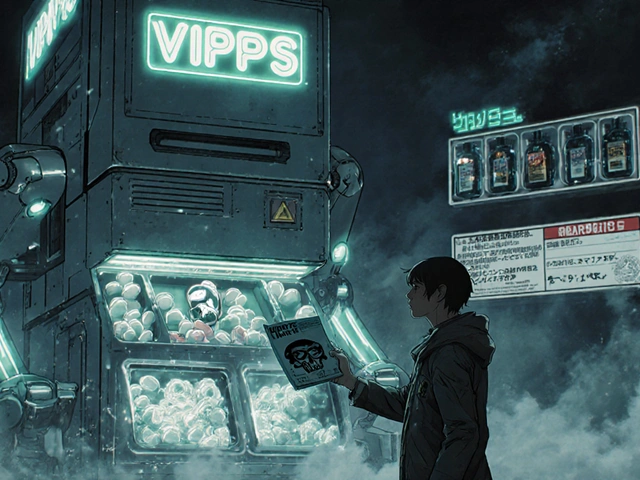Millions of Americans rely on Medicaid to get the medicines they need - but knowing what’s covered isn’t always simple. If you’re on Medicaid and wondering whether your insulin, antidepressant, or arthritis pill is covered, you’re not alone. The truth is, Medicaid prescription coverage isn’t the same in every state, and even within a state, the rules change often. What’s covered today might be restricted tomorrow. Here’s exactly what’s included in Medicaid’s prescription drug benefits in 2025 - and what to watch out for.
Almost Everyone Gets Prescription Coverage - But Not the Same Way
Federal law doesn’t require Medicaid to cover prescription drugs, but every state does. Why? Because it’s cheaper for states to pay for medications than to pay for hospital visits when people can’t afford their pills. In 2025, Medicaid covers outpatient prescriptions for about 85 million people across the U.S. That’s nearly 1 in 4 Americans. But here’s the catch: while coverage is universal, the details aren’t. Each state runs its own program, sets its own rules, and negotiates its own deals with drug companies.How Medicaid Decides What Drugs to Cover
Medicaid doesn’t just pay for every drug on the market. Instead, each state creates a Preferred Drug List - or PDL - that sorts medications into tiers. Think of it like a menu with price labels. Tier 1 usually includes generic drugs. These are the cheapest and easiest to get. Tier 2 has brand-name drugs that don’t have a generic version yet. Tier 3 and higher? Those are specialty drugs - expensive, often for rare or chronic conditions like cancer or multiple sclerosis. States use these tiers to control costs. If a drug is on Tier 1, your copay might be $1 to $5. On Tier 2, you could pay $15 to $30. For specialty drugs, it can go up to $100 or more - unless you qualify for extra help.Step Therapy: You Might Have to Try Other Drugs First
One of the biggest surprises for new Medicaid users is step therapy. Also called “trial and failure,” this rule means you can’t get the drug your doctor prescribed right away. You have to try two cheaper, preferred drugs first - and prove they didn’t work. For example, if your doctor prescribes a newer antidepressant, Medicaid might require you to try two older, generic SSRIs first. Only after those fail - and your doctor documents it - will they approve the original prescription. This rule applies in 38 states as of 2025. North Carolina, for instance, requires two failed trials for most mental health and chronic disease medications. There are exceptions. If there’s only one drug in a class, or if your condition is too severe, your doctor can request an exception. But that means paperwork. And delays.Prior Authorization: The Hidden Hurdle
Even if a drug is on your state’s formulary, you might still need prior authorization. This is a formal request from your doctor to Medicaid saying, “This drug is medically necessary.” Without it, the pharmacy won’t fill the prescription. Common drugs that need prior authorization include:- High-cost specialty medications
- Drugs with safety warnings (like certain painkillers or antipsychotics)
- Medications used for off-label purposes

Costs You Might Still Pay
Medicaid doesn’t mean free drugs. You’ll usually pay a small copay. In 2025, most states cap copays at:- $1-$5 for generics
- $10-$20 for brand-name drugs
- $40-$100 for specialty drugs
What’s Not Covered?
Not every drug is covered. States remove medications from their formularies all the time - usually because they stop getting rebates from drugmakers. In North Carolina’s 2025 update, 12 drugs were dropped entirely, including:- Vasotec (blood pressure)
- Acanya (acne cream)
- Trulance (IBS-C)
- Uceris (ulcerative colitis)
How to Find Your State’s Formulary
You can’t guess what’s covered. You have to check. Every state publishes its Preferred Drug List online. In North Carolina, it’s updated in July and October. In Florida, it’s updated quarterly. You can find yours by searching “[Your State] Medicaid Preferred Drug List.” Many states partner with pharmacy benefit managers (PBMs) like CVS Caremark, Express Scripts, or OptumRx. These companies manage the formularies. Their websites often have searchable drug lists - just search by brand or generic name.
Where to Fill Your Prescriptions
You can’t just go to any pharmacy. Medicaid has a network. If you go outside it, you’ll pay full price. Most states require you to use in-network pharmacies - and many push you toward mail-order for maintenance drugs like blood pressure pills or diabetes meds. You’ll get a 90-day supply for the same cost as a 30-day retail fill. Check your state’s Medicaid website or call your PBM’s customer service line to find the nearest in-network pharmacy. Some states even have apps to help you locate them.What’s Changing in 2025 and Beyond
New rules are coming. The Inflation Reduction Act of 2022 capped out-of-pocket drug costs at $2,000 per year for Medicare Part D - and this helps dual-eligible patients (those on both Medicare and Medicaid). Starting in 2025, Medicaid beneficiaries can change their drug coverage once a month, not just once a year. That’s a big win for people whose needs change quickly. Also, CMS is preparing new guidelines for 2026 that will require states to prove their formularies don’t block access to medically necessary drugs. That could mean fewer step therapy barriers in the future. Meanwhile, drug prices keep rising. Specialty medications now make up just 3% of prescriptions but 42% of Medicaid’s drug spending. New gene therapies - costing over $2 million per dose - are coming. States are scrambling to find ways to pay for them without cutting other services.What to Do If You’re Struggling
If you’re denied a drug, don’t give up. Ask your doctor to submit a detailed letter explaining why the preferred drug won’t work for you. Keep copies of all paperwork. Call your state’s SHIP (State Health Insurance Assistance Program) - they offer free counseling. In Q3 2025, 64% of all SHIP calls were about Medicaid drug coverage issues. If you’re paying too much, check if you qualify for Extra Help. Even if you think you don’t, apply. The process is simple. You might be surprised.Bottom Line
Medicaid covers a lot of prescriptions - but it’s not a free-for-all. You’ll face formularies, step therapy, prior authorizations, and network restrictions. The system is designed to save money, not to make things easy. But you have rights. You have tools. And you’re not alone.Know your state’s formulary. Talk to your pharmacist. Ask your doctor for help with appeals. And if you’re confused - reach out. Millions before you have walked this path. You can too.
Does Medicaid cover all prescription drugs?
No. Medicaid covers most prescription drugs, but each state creates a Preferred Drug List (PDL) that limits which medications are covered. Some drugs are excluded entirely, especially if they’re expensive or no longer eligible for federal rebates. Even if a drug is on the list, you may need prior authorization or must try cheaper alternatives first.
What is step therapy in Medicaid?
Step therapy, also called trial and failure, means you must try and fail on two lower-cost, preferred drugs before Medicaid will cover the one your doctor prescribed. This applies to most chronic conditions like depression, diabetes, or arthritis. Exceptions exist if only one drug exists in the class or if your doctor provides proof that alternatives won’t work for you.
Do I have to pay for my Medicaid prescriptions?
Yes, most states require small copays: $1-$5 for generics, $10-$20 for brand-name drugs, and up to $100 for specialty drugs. If you qualify for Extra Help (Low-Income Subsidy), your copays drop to $4.90 for generics and $12.15 for brands. Once you hit $2,000 in annual drug spending, you pay $0 for covered drugs.
How do I find out what drugs are covered in my state?
Search for “[Your State] Medicaid Preferred Drug List” on your state’s health agency website. Many states use pharmacy benefit managers like CVS Caremark or OptumRx - their websites also have searchable formularies. Always check the most recent version, as lists change every few months.
Can I get my medication faster if I’m denied?
Yes. If your prior authorization is denied, you can appeal. Over 78% of appeals are approved when your doctor submits detailed clinical documentation showing medical necessity. You can also ask for an expedited review if your condition is urgent. Call your state’s SHIP program for free help with the appeal process.
What if my drug was removed from the formulary?
If your drug was removed, your doctor can request a one-time exception to continue your current medication for up to 90 days. After that, you’ll need to switch to a covered alternative or apply for a long-term exception based on medical need. Don’t stop taking your medication - contact your pharmacy or Medicaid office immediately to avoid interruption.
Do I have to use a specific pharmacy?
Yes. You must use a Medicaid-participating pharmacy. If you go to an out-of-network pharmacy, you’ll pay full price. Most states encourage or require mail-order for maintenance medications like blood pressure or diabetes drugs. Check your state’s Medicaid website or call your pharmacy benefit manager to find in-network locations near you.
Can I get help paying for my medications?
If you have full Medicaid coverage, you automatically qualify for Extra Help - a federal program that cuts your drug costs to $4.90 for generics and $12.15 for brands. Many people don’t know they’re eligible. Apply through your state Medicaid office or Medicare.gov. You can also contact your local SHIP counselor for free assistance.





Girish Pai
November 18, 2025 AT 13:43Let’s cut through the bureaucratic noise-Medicaid’s formulary games are just corporate cost-shifting dressed up as ‘efficiency.’ Step therapy? That’s a backdoor rationing scheme. States don’t care if you’re stable on a drug-they care if the rebate check clears. And don’t get me started on PBMs skimming 20% off the top while you wait 14 days for a prior auth. This isn’t healthcare. It’s a supply chain optimized for profit margins, not patient outcomes. 🚩
Hal Nicholas
November 19, 2025 AT 03:37Wow. Just… wow. You’d think after 60 years of Medicaid, we’d have a system that doesn’t treat patients like audit targets. I’ve seen people skip doses because the ‘preferred’ antidepressant gave them suicidal ideation. But no-step therapy requires you to get worse first before they’ll listen. This isn’t policy. It’s cruelty with a spreadsheet.
Christine Eslinger
November 19, 2025 AT 11:05Hi everyone-I’m a pharmacist in Ohio, and I see this daily. The good news? You have rights. If your doctor writes ‘medical necessity’ on the prior auth form with lab results or prior treatment failures, approval rates jump to 80%+. Also-always ask for a 30-day bridge prescription while you appeal. Many pharmacies will give you one for free if you explain you’re at risk of hospitalization. And yes, Extra Help kicks in automatically with full Medicaid-you don’t have to apply separately. Just confirm with your caseworker. You’re not alone in this.
Heidi R
November 20, 2025 AT 21:50Oh sweetie. You’re telling me people are shocked that Medicaid doesn’t cover $2M gene therapies? Honey. We’re paying for insulin. The system is already bankrupt. If you can’t afford your meds, maybe don’t have chronic illness? Just a thought.
Brenda Kuter
November 21, 2025 AT 03:07THEY’RE HIDING DRUGS ON PURPOSE. I SAW A LETTER FROM A ‘PHARMACEUTICAL PARTNER’ IN MY STATE’S MEDICAID PORTAL. IT SAID ‘REBATES FOR VASECOT WERE REDUCED BY 47%’-SO THEY DROPPED IT. THAT’S NOT MEDICAL. THAT’S CORPORATE BLACKMAIL. THEY’RE SELLING OUT PATIENTS FOR SLIGHTLY HIGHER PROFITS. I’M TELLING MY CONGRESSPERSON. #MEDICAIDCRISIS
Shaun Barratt
November 21, 2025 AT 22:59Apologies for the typographical errors in this message, as I am composing it on a mobile device with an auto-correct system that appears to have been designed by a committee of sentient raccoons. That said, the structural inefficiencies in Medicaid’s formulary management are indeed well-documented and warrant systemic reform. The tiered formulary model, while economically rational, imposes significant cognitive and logistical burdens on vulnerable populations. A standardized national formulary with tiered copay caps, as proposed in the 2024 CMS Blueprint, may be a viable path forward.
Iska Ede
November 23, 2025 AT 18:32So let me get this straight-you’re telling me the same people who scream about ‘free healthcare’ are now mad because their $2000/month drug got moved to Tier 4? 😂 Honey, Medicaid isn’t a luxury spa. It’s a safety net. If you want the newest, shiniest, most expensive pill, maybe get a job that pays more than $12/hour. Just saying.
Gabriella Jayne Bosticco
November 24, 2025 AT 06:21My mum’s on Medicaid and just got her Trulance pulled last month. She’s been stable for 3 years. The pharmacy called me crying-she couldn’t afford the cash price. We appealed. Took 11 days. They approved it. But here’s the thing: if you don’t know to call SHIP, you just stop taking it. This system doesn’t fail because people are lazy-it fails because no one tells you how to fight. Please share this. Someone’s life depends on it.
Shilpi Tiwari
November 24, 2025 AT 07:16As a health policy researcher from Delhi, I find this deeply familiar. India’s Ayushman Bharat has similar tiered formularies, but with fewer specialty drugs. What’s alarming here is the lack of transparency-why aren’t PBM rebate agreements public? In India, even private insurers must disclose formulary change rationales. The U.S. Medicaid system is a black box where profits dictate access. This isn’t healthcare-it’s market-driven extraction. The 2026 CMS guidelines are a start, but they need teeth.
Denny Sucipto
November 25, 2025 AT 04:52I’ve been on Medicaid for 8 years. Insulin. Blood pressure. Antidepressants. I’ve had to fight for every single one. But here’s what nobody tells you: your pharmacist is your secret weapon. They know which drugs are about to get pulled, which prior auths get approved fast, and which doctors are good at writing appeals. Go talk to them. Bring your paperwork. Ask for help. They’ve seen it all. And they’ll fight for you if you let them. You’re not a burden. You’re a person.
Holly Powell
November 25, 2025 AT 14:10Let’s analyze the cost-benefit calculus of formulary exclusions: the marginal utility of maintaining coverage for Acanya (acne cream) is negligible relative to the marginal cost of its rebate structure, especially when compared to the QALY gains of prioritizing oncology agents. The state’s decision to deprioritize non-life-threatening dermatologicals aligns with standard actuarial principles-unless you’re a teenager, in which case your psychosocial development is deemed ‘non-essential.’ Classic utilitarianism in action.
Emanuel Jalba
November 25, 2025 AT 16:26THIS IS WHY WE NEED TRUMP BACK!! 🚨 They’re stealing our meds and giving the money to China! I heard a guy on Truth Social say PBMs are owned by the Illuminati and they’re using Medicaid to slowly kill the white working class. My cousin’s dad died because his blood pressure med got pulled and the hospital said ‘it was preventable.’ 😭💔 We need to burn the system down. #MedicaidIsACon